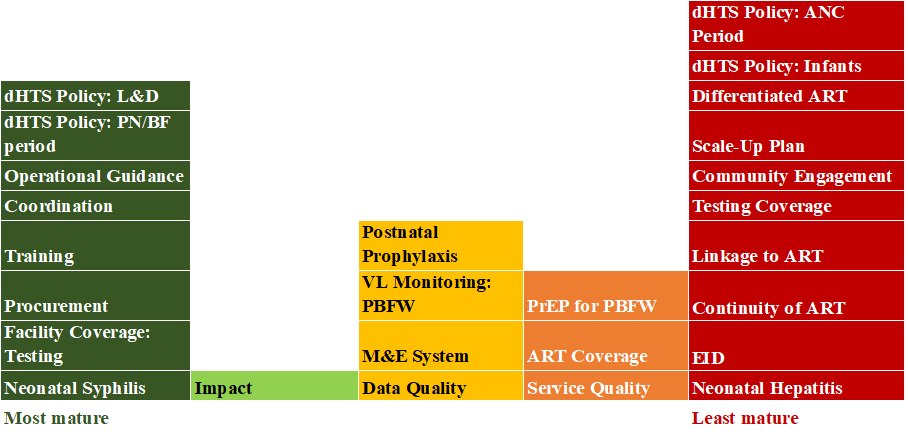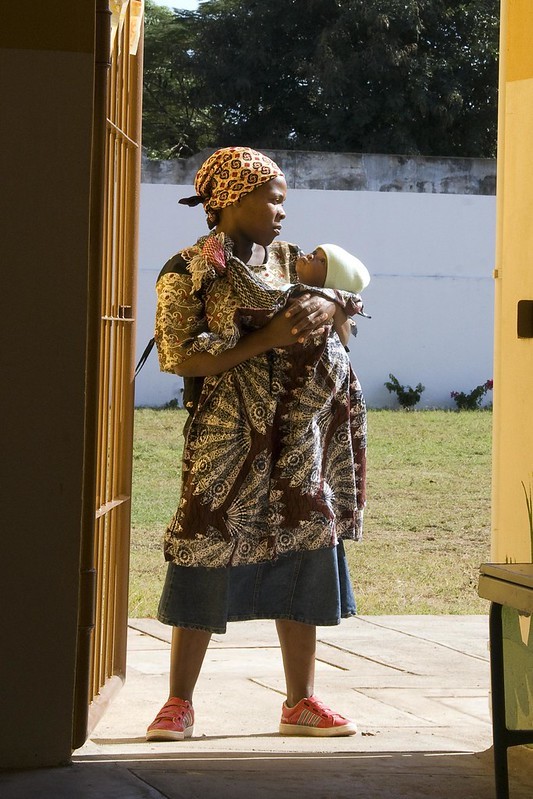Mozambique
With approximately 16,000 children acquiring HIV in 2024, Mozambique has one of the highest HIV burdens among the HIVE partner countries.
Background
Mozambique has an adult prevalence of 11.5% and an annual incidence rate of 0.49%. The estimated vertical transmission rate stands at 12.2%, with approximately 16,000 children acquiring HIV in 2024.
The country is deeply committed to ending HIV in children through its Vertical Transmission Prevention (VTP) program. This work is guided by the national plan for the triple elimination of HIV, syphilis, and hepatitis B, and is aligned with Mozambique’s Global Alliance plans.
The national plan prioritizes:
-
-
Preventing new infections among women of reproductive age.
-
Scaling up viral load testing to monitor treatment response.
-
Simplifying clinical practices that support treatment retention.
-
Strengthening prevention during pregnancy and breastfeeding.
-
Ensuring appropriate postnatal prophylaxis for infants exposed to HIV.
-
Progress toward elimination targets, 2024
| Elimination of vertical transmission | |
|---|---|
| Pregnant women who received ART for VTP (#) | 110,000 |
| Pregnant women needing ART for VTP (#) | 130,000 |
| Coverage of pregnant women who received ART for VTP (%) | 82 |
| Early infant diagnosis < 2 months of age (%) | 68 |
| New HIV infection among children (#) | 16,000 |
| New HIV infections averted due to VTP interventions | 25,000* |
| Final vertical transmission rate including during breastfeeding (%) | 12.2 |
| Number of HIV-exposed children who are uninfected (Million) | 1,400,000 |
| Source: UNAIDS 2024 estimates, *UNAIDS 2024 country fact sheet 2023 | |
HIVE Engagement
Mozambique joined the HIVE network in October 2024. The partnership began with a baseline visit from the HIVE team, which engaged the Ministry of Health, UN agencies, PEPFAR partners, and implementing organizations. The Ministry nominated the national PMTCT coordinator to lead Mozambique’s engagement.
Since then, Mozambique has actively participated in HIVE learning exchanges and piloted the Vertical Transmission Elimination Capability Maturity Model (VTE CMM). In December 2024, alongside five other HIVE countries, Mozambique conducted a self-assessment using the VTE CMM. This review identified both strengths and gaps, including:
-
-
Implementation gaps: differentiated ART services for pregnant and breastfeeding women (PBFW), treatment linkage and continuity, and early infant diagnosis.
-
Policy gaps: HIV testing for infants and pregnant women.
-
The assessment identified the most mature and least mature domains, as shown in the figure below:

Overview of Mozambique’s 2024 VTP self-assessment results
Service Disruptions and Landscaping Survey
On January 20, 2025, an Executive Order (EO) paused all U.S. government (USG) foreign assistance for 90 days, including funding for PEPFAR-supported activities. A waiver issued on January 28 allowed access to lifesaving HIV services, including prevention, testing, and care and treatment for pregnant and breastfeeding women (PBFW) and children.
Despite this waiver, Mozambique’s VTP program was severely disrupted, significantly impacting services for PBFW and HIV-exposed infants. The pause affected PEPFAR-supported health workers and community-based interventions, such as mentor mothers and community health workers. Service delivery was further compromised by interruptions in HIV re-testing, halted transport of viral load and dried blood spot (DBS) samples, and reduced laboratory staffing—leading to longer turnaround times for early infant diagnosis and viral load results.
Coordination efforts, including technical assistance and last-mile supply chain distribution, were also disrupted. While most facility-based services resumed under the waiver, major challenges remain, particularly in sample transport and commodity distribution.
In response, the government has stepped in to support logistics and transport; however, comprehensive emergency and sustainability plans to ensure long-term continuity and resilience of the VTP program are still in development.
Alignment with the Global Alliance
Mozambique joined the Global Alliance to End AIDS in Children in 2022, committing to eliminate pediatric HIV by 2030, and has since prioritized a triple‐elimination plan (HIV, syphilis, hepatitis B), expanded viral load testing and suppression, and strengthened HIV re-testing for pregnant and breastfeeding adolescents and women. HIVE activities are directly aligned with these priorities, providing technical support to accelerate Mozambique’s progress toward the Global Alliance .


